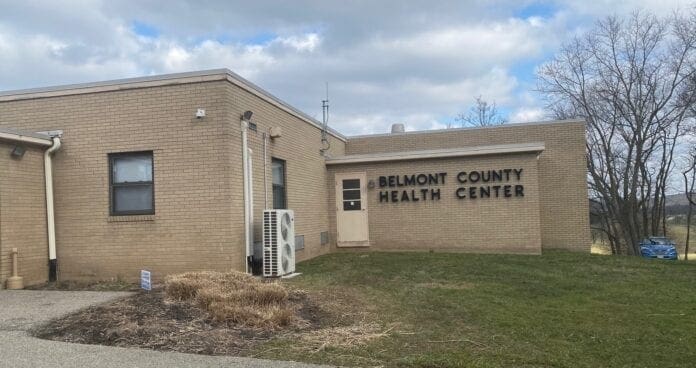Last January, the staff at the Belmont County Health Department was in the early stages of learning about this new potential health issue, the coronavirus.
Belmont County was still two months away from its first documented cases of COVID-19. What a difference a year makes.
“We are deep in the trenches now,” said Robert Sproul, Deputy Health Commissioner for the Belmont County Health Department. “Last January, there were a lot of questions, and lot of news reports to read.”
Now the department’s days are filled with fielding innumerable COVID-related calls, setting up testing sites, working to administer the final doses of the Moderna vaccine to those with a 1A designation, and preparing for the first round of 1B.
It’s been an eventful year to be sure. Amongst everything else, the staff is working to not let COVID-fatigue affect its collective psyche.
“Everyone is wanting to get the vaccine so they can get back to normal, get this resolved, and it’s tough not being able to come up with an easy answer,” Sproul said. “It can get frustrating on our end.”
Sproul said they are reaching out to those in the 1B classification that contacted the department for appointments so that when Governor Mike DeWine signals the okay, they can proceed.
Lots to Vaccinate
Sproul is anticipating a large demand from the 1B distribution roll and for multiple reasons.
For those unfamiliar, 1B classification pertains to all Ohioans age 65 and older, Ohioans with severe congenital, developmental, or early-onset medical disorders that make them particularly vulnerable, or adults/employees in all schools that want to go back, or remain, providing instruction in person.
Nearly a quarter of Belmont County’s 67,000-plus residents are age 65 or older. Senior citizens will comprise a large swathe of the 1B designees wishing to receive the vaccine.
But Sproul knows overall, there’s a more favorable opinion about the vaccines now that more information about them available.
“Everyone was questioning it because it was a new vaccine, but now, you’re seeing more and more people getting it because they are seeing it is a safe vaccine,” Sproul said. “They are more receptive to it.
“In Belmont, our population is going to be more in the 1B category because of the percentage of our population over 65, plus you add in those working in the schools and those with severe health conditions.
“This may be one of our largest groups that need vaccinate. That’s what we’re anticipating.”
Coordinating the Next Phase
With such a large group of residents going to be requesting the vaccine, how is the health department going to handle such an increase in demand?
Thankfully, many are coming forward already offering their assistance.
“We have a lot of volunteers who have reached out, partner agencies,” Sproul said. “If we get to that point in need, there are a lot of resources available. I don’t want to fatigue them out early on, but hopefully we received 1,000 doses in a shipment, and we can set up a large pod to distribute.
“If that happens, we can reach out to our partners for assistance.”
Because the coronavirus vaccine requires a second dose within a set timeframe, it requires a little more legwork for each patient in regard to administering the vaccine.
Each recipient is given a card with a date of when to return for the follow-up shot, and that information is tracked via software. It makes the process easier for both the recipient and the health department.
“We give them the date to come back, and we keep track of that here,” Sproul said. “The card has the date for the next dose on it, and that information gets entered into our system.”
Additional Help on the Horizon?
Sproul is hopeful that both the Johnson & Johnson as well as the United Kingdom-produced AstraZeneca-Oxford University vaccine will receive universal approve in the U.S.
That will help boost the potential vaccines that Belmont County is able to offer.
Currently, the county can only administer the Moderna vaccine. The Pfizer vaccine requires storage in extreme cold in temperatures ranging from negative 15 down to negative 76 degrees.
“Moderna is in the range of our freezer as we have some vaccines that are frozen for later use for back to school and other such things,” Sproul said. “Pfizer’s has to be ultra-cold and would require purchasing a piece of equipment that we probably wouldn’t have a use for beyond this.”


